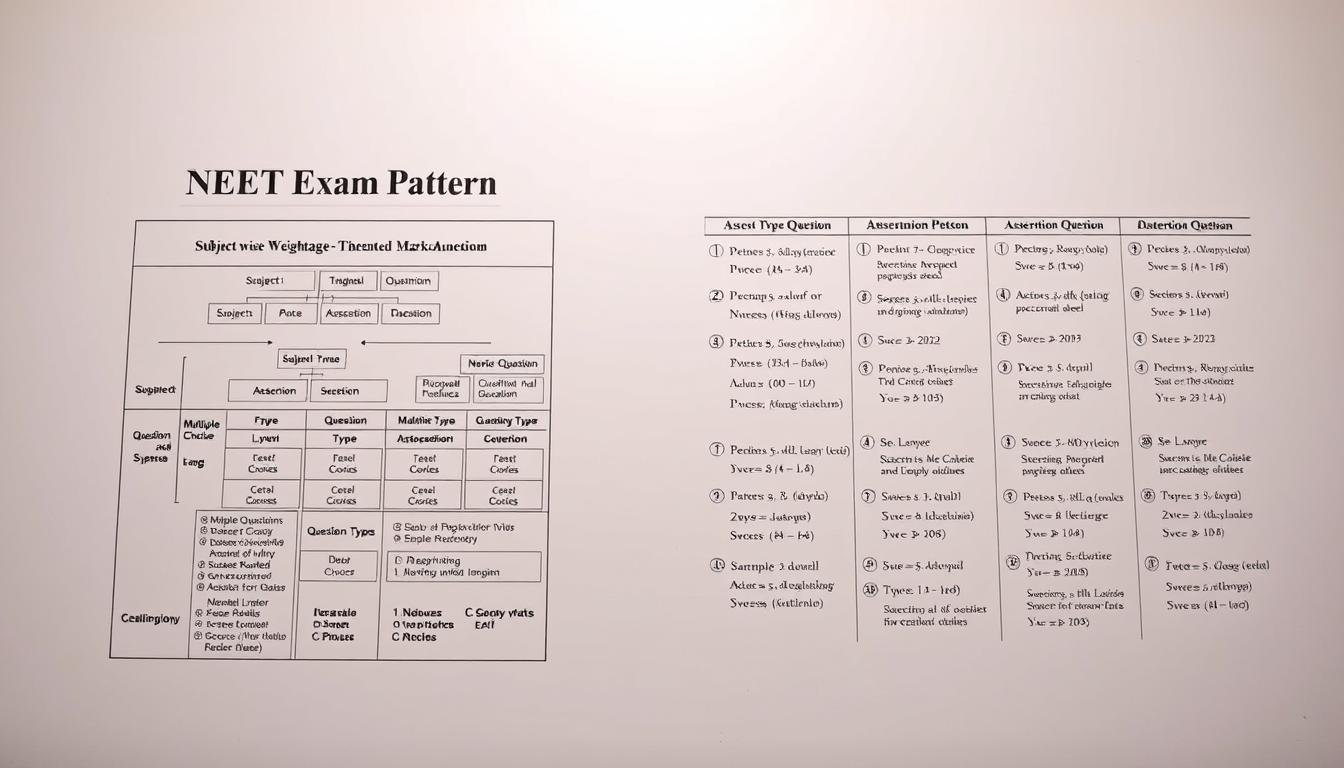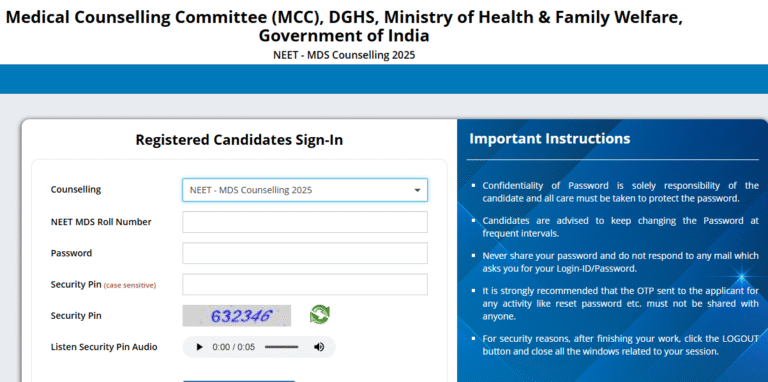Have you ever wondered how the structure of one of India’s most competitive exams has transformed? The NEET exam has seen significant changes since its inception, especially in its format and question distribution. Understanding these shifts is crucial for aspirants aiming to crack the test with confidence.
In recent years, the exam pattern has been streamlined to ensure fairness and clarity. For instance, optional questions have been removed, and candidates are now required to attempt a fixed number of questions. This change has made the test more predictable and easier to prepare for.
By analyzing the evolution of the exam, we can help you align your preparation strategies with the latest standards. Let’s dive deeper into what these changes mean for your success.
Introduction and Overview
Examining past trends offers a roadmap for future success. Over the years, we have meticulously analyzed the shifts in competitive exams to provide aspirants with actionable insights. This section outlines our journey through these trends and their significance in shaping preparation strategies.
Our Journey Through NEET Trends
Our analysis spans several years, focusing on the evolution of question distribution and exam patterns. By dissecting past papers, we identified recurring themes and high-frequency topics. This helps candidates prioritize their study efforts effectively.
Purpose and Scope of the Analysis
The primary goal of this analysis is to highlight the importance of understanding exam patterns. By reviewing question distribution and marking schemes, we aim to equip aspirants with the knowledge to optimize their preparation. Staying updated with these changes is crucial for success.
Below is a summary of the question distribution and marks across subjects:
| Subject | Questions | Marks |
|---|---|---|
| Physics | 45 | 180 |
| Chemistry | 45 | 180 |
| Biology | 90 | 360 |
Understanding these details empowers candidates to allocate their time and resources efficiently. By leveraging this analysis, aspirants can approach their preparation with confidence and clarity.
Understanding NEET Exam Evolution
The journey of competitive exams reveals fascinating insights into their evolution. Over the years, the structure and design of these tests have undergone significant changes. These shifts have been driven by the need to create a fair and transparent evaluation system for aspirants.
Historical Milestones and Changes
One of the most notable changes has been the introduction of a fixed number of questions. Earlier versions allowed optional questions, which created inconsistencies in evaluation. The NTA has since streamlined the process to ensure uniformity.
Another key milestone was the revision of the marking scheme. The current system awards four marks for each correct answer and deducts one mark for incorrect ones. This encourages candidates to attempt questions thoughtfully.
Impact on Preparation Strategies
These historical changes have directly influenced how aspirants prepare for the exam. Here’s how:
- Focus on high-weightage topics to maximize marks.
- Practice time management to handle the fixed question count effectively.
- Analyze previous papers to understand recurring themes and question types.
By aligning their strategies with these changes, candidates can approach the exam with greater confidence and clarity.
Exam Structure and Changing Patterns
Understanding the structure of competitive exams can significantly boost your preparation. Over time, the format has shifted to ensure fairness and clarity. This section delves into the breakdown of question types and the transition from old to new patterns.
Breakdown of Question Types
The exam consists of objective multiple-choice questions. These are divided into three main sections: Physics, Chemistry, and Biology. Each section has a fixed number of questions, ensuring uniformity in evaluation.
Here’s a quick overview of the question distribution:
- Physics: 45 questions
- Chemistry: 45 questions
- Biology: 90 questions
This structure helps candidates focus on high-weightage topics and manage their time effectively.
Transition from Old to New Patterns
Earlier versions of the exam included optional questions, which created inconsistencies. The new format removes these options, requiring candidates to answer all questions. This change has streamlined the process and made the test more predictable.
Another significant shift is the realignment of the syllabus. The updated syllabus emphasizes core concepts, especially in Physics. This ensures that aspirants are tested on essential topics relevant to their future studies.
These changes have impacted preparation strategies in the following ways:
- Focus on mastering core concepts in Physics and other subjects.
- Practice time management to handle the fixed question count.
- Analyze previous papers to identify recurring themes.
By understanding these patterns, candidates can approach the exam with confidence and clarity.
neet previous year pattern
Analyzing past exams provides valuable insights into recurring themes and strategies. Over the years, distinct patterns have emerged, particularly in subjects like Chemistry and Biology. These patterns help aspirants focus on high-weightage topics and refine their preparation methods.
One notable trend is the evolution of question types. Earlier versions included a mix of straightforward and application-based questions. Recent exams, however, emphasize critical thinking and problem-solving. This shift requires candidates to adapt their study techniques to handle diverse question formats effectively.
The marking system has also seen significant changes. Initially, there was no penalty for incorrect answers. Now, for every correct answer, candidates earn four marks, while one mark is deducted for wrong attempts. This system encourages thoughtful answering and minimizes guesswork.
Understanding these patterns is key to refining exam strategies. Here’s a summary of the question distribution and marking practices:
| Subject | Questions | Marks per Correct Answer | Marks Deducted per Wrong Answer |
|---|---|---|---|
| Chemistry | 45 | +4 | -1 |
| Biology | 90 | +4 | -1 |
By aligning their preparation with these insights, candidates can approach the exam with confidence and clarity. Analyzing past papers not only highlights important topics but also helps in managing time and reducing anxiety.
Subject-wise Analysis of NEET Papers
A detailed subject-wise analysis can significantly enhance your exam readiness. By understanding the trends in Physics, Chemistry, and Biology, candidates can focus on high-yield topics and refine their preparation strategies. This section provides insights into recurring themes and actionable advice for each subject.
Physics and Chemistry Trends
Physics has consistently been a challenging section, with a majority of questions from Mechanics and Modern Physics. In recent exams, numerical problems dominated, requiring strong problem-solving skills. For example, topics like Magnetism and Optics saw significant representation, making them essential for preparation.
Chemistry, on the other hand, is divided into Organic, Inorganic, and Physical Chemistry. Inorganic Chemistry often includes straightforward questions, while Organic Chemistry tests application-based concepts. Physical Chemistry focuses on numerical problems, especially in topics like Thermodynamics and Electrochemistry.
Biology Breakdown: Botany and Zoology
Biology is split into Botany and Zoology, each with distinct focus areas. Botany questions frequently cover Genetics and Plant Physiology, while Zoology emphasizes Human Physiology and Biotechnology. Understanding these trends helps candidates allocate study time effectively.
Here are some key topics to prioritize:
- Botany: Genetics, Photosynthesis, and Plant Reproduction.
- Zoology: Human Health, Molecular Basis of Inheritance, and Biotechnology.
By incorporating this subject-wise analysis into your preparation, you can approach the exam with confidence and clarity. Focus on mastering high-weightage topics and practice regularly to improve accuracy and speed.
Marking Scheme Changes Over the Years
The marking scheme of competitive exams has evolved significantly, impacting how candidates approach their preparation. Over time, the National Testing Agency (NTA) has introduced changes to ensure fairness and accuracy in evaluation. These updates have reshaped strategies for aspirants aiming to maximize their scores.
Positive Marking vs. Negative Marking
Earlier versions of the exam did not penalize incorrect answers, allowing candidates to guess without consequences. However, the current system awards four marks for each correct answer and deducts one mark for every wrong attempt. This shift encourages thoughtful answering and minimizes guesswork.
Here’s a comparison of the older and newer marking schemes:
| Aspect | Older Scheme | Newer Scheme |
|---|---|---|
| Correct Answer | +4 Marks | +4 Marks |
| Incorrect Answer | 0 Marks | -1 Mark |
| Unanswered Questions | 0 Marks | 0 Marks |
Recent Updates and Their Effects
The NTA has made several updates to the evaluation system, including the removal of optional questions and the introduction of a fixed question count. These changes have streamlined the exam, making it more predictable and easier to prepare for. For instance, the NEET-UG 2025 exam now consists of 180 mandatory questions, reducing the complexity of the previous format.
These updates have a direct impact on candidate performance and strategy:
- Aspirants must focus on accuracy to avoid losing marks.
- Time management becomes crucial to attempt all questions within the given duration.
- Analyzing past papers helps identify high-weightage topics and recurring themes.
By understanding these changes, candidates can recalibrate their preparation methods and approach the exam with confidence.
Paper Pattern Comparison: Old vs. New
The design of competitive exams has seen notable shifts over time, shaping how aspirants prepare. By comparing older formats with the latest structure, we can better understand these changes and their impact on preparation strategies.
Structure of Previous Exam Versions
Earlier versions of the exam included optional sections, allowing candidates to choose questions based on their strengths. This flexibility, however, led to inconsistencies in evaluation. The total number of questions varied, and the syllabus was less streamlined, making preparation more challenging.
For example, the 2024 format featured 200 questions, with 50 in Physics, 50 in Chemistry, and 100 in Biology. Candidates could skip certain sections, but this often resulted in uneven performance evaluation.
Modifications Introduced in Recent Years
Recent updates have brought significant changes to the exam structure. The 2025 format now consists of 180 mandatory questions, removing the optional sections entirely. This ensures uniformity and fairness in evaluation. Additionally, the exam duration has been reduced to 180 minutes, making time management crucial.
Here’s a comparison of the old and new formats:
| Aspect | Old Format | New Format |
|---|---|---|
| Total Questions | 200 | 180 |
| Optional Sections | Yes | No |
| Exam Duration | 200 minutes | 180 minutes |
These modifications reflect the evolving standards of competitive exams and aim to create a more balanced evaluation system. By understanding these changes, candidates can tailor their preparation strategies to align with the latest requirements.
Key Highlights of NEET Previous Exams
Understanding the core elements of past exams can significantly enhance your preparation strategy. By analyzing key aspects like question distribution, exam duration, and language options, candidates can identify critical areas to focus on. This section provides a concise overview of these elements to help you align your preparation effectively.
Question Distribution Across Subjects
One of the most critical aspects of the exam is the distribution of questions across subjects. Over the years, the structure has remained consistent, with Physics, Chemistry, and Biology forming the core sections. Here’s a breakdown of the question distribution:
| Subject | Questions | Marks |
|---|---|---|
| Physics | 45 | 180 |
| Chemistry | 45 | 180 |
| Biology | 90 | 360 |
This distribution highlights the importance of focusing on Biology, which carries the highest weightage. However, Physics and Chemistry also require equal attention to ensure a balanced score.
Time Duration and Exam Medium
The exam duration has been a crucial factor in shaping preparation strategies. Candidates are given 180 minutes to complete 180 questions, requiring efficient time management. Additionally, the exam is conducted in multiple languages, including English, Hindi, and regional languages, ensuring accessibility for all aspirants.
Exam centres play a significant role in determining the language options available. For instance, centres in non-Hindi-speaking regions often provide additional regional language options. This flexibility allows candidates to attempt the exam in their preferred language, reducing language barriers and enhancing performance.
By understanding these key highlights, candidates can tailor their preparation to align with the exam’s structure and requirements. Focus on mastering high-weightage topics, practice time management, and choose the exam medium that suits you best for optimal results.
Strategies to Analyze Past Question Papers
Mastering the art of analyzing past question papers can be a game-changer for your preparation. By dissecting these papers, you can uncover recurring themes, identify high-weightage topics, and refine your study plan. This section provides actionable strategies to help you make the most of this valuable resource.
Identifying High-Frequency Topics
One of the first steps in analyzing past papers is to identify topics that appear frequently. For instance, in Physics, Mechanics and Modern Physics are often tested. In Chemistry, Organic and Inorganic Chemistry dominate, while Biology focuses on Genetics and Human Physiology.
Here’s a summary of high-frequency topics across subjects:
| Subject | High-Frequency Topics |
|---|---|
| Physics | Mechanics, Magnetism, Optics |
| Chemistry | Organic Chemistry, Thermodynamics |
| Biology | Genetics, Human Physiology |
Focusing on these areas can help you prioritize your study efforts and maximize your score.
Techniques for Effective Analysis
Analyzing past papers requires a systematic approach. Start by categorizing questions into easy, medium, and difficult. This helps you understand your strengths and areas for improvement. For example, if you consistently struggle with numerical problems in Physics, dedicate more time to practicing them.
Another effective technique is to analyze the language and wording of questions. This is especially useful for candidates taking the exam in English or Hindi. Understanding the phrasing can help you interpret questions accurately and avoid common pitfalls.
Here are some additional tips:
- Practice under timed conditions to improve speed and accuracy.
- Review mistakes to identify patterns and avoid repetition.
- Combine past papers with mock tests for comprehensive preparation.
By following these strategies, you can enhance your understanding of the exam format and boost your confidence.
Leveraging Past Papers for Effective Preparation
Utilizing past question papers can transform your preparation approach by providing clarity and direction. These resources offer insights into question patterns, difficulty levels, and recurring themes, helping you focus on high-yield topics. By integrating them into your study plan, you can enhance both accuracy and speed.
Developing a Structured Study Plan
Past papers serve as a foundation for creating a structured study plan. Start by categorizing questions into subjects and topics. For instance, Physics often emphasizes Mechanics and Optics, while Chemistry focuses on Organic and Inorganic concepts. Biology, with its high weightage, requires attention to Genetics and Human Physiology.
Here’s a breakdown of how to allocate your time:
- Physics: 30% of study time
- Chemistry: 30% of study time
- Biology: 40% of study time
This balanced approach ensures comprehensive coverage of all subjects.
Integrating Solutions and Answer Keys
Ready-made solutions and official answer keys are invaluable for self-assessment. After attempting a test booklet, compare your answers with the provided solutions. This helps identify mistakes and understand the correct approach. For example, if you struggle with numerical problems in Physics, reviewing solutions can clarify the steps involved.
Here’s how to make the most of these resources:
- Analyze incorrect answers to avoid repeating mistakes.
- Focus on time management by timing your practice sessions.
- Use answer keys to track progress and benchmark scores.
Simulating exam conditions is another effective strategy. Practice with a test booklet under timed conditions to build stamina and improve speed. This mirrors the actual exam environment, reducing anxiety and boosting confidence.
Focusing on integrated problem-solving in Physics and Chemistry can also yield significant benefits. For instance, combining concepts from both subjects, such as Thermodynamics in Chemistry and Energy in Physics, enhances understanding and application skills.
By following these strategies, you can optimize your preparation and approach the exam with confidence. For more tips on building a structured study routine, explore our detailed guide.
Insights from NTA Announcements and Regulatory Changes
Recent announcements from the NTA have brought clarity to the examination process. These updates are crucial for aspirants aiming to align their preparation with the latest standards. By understanding these changes, candidates can approach the exam with confidence and precision.
Details on Exam Mode and Application Updates
The NTA has confirmed that the examination will be conducted offline using OMR sheets. This traditional method ensures fairness and transparency. The exam duration remains fixed at 180 minutes, requiring candidates to manage their time effectively.
Application updates include a streamlined submission process. The fee structure varies based on categories, with General candidates paying Rs 1,700 and Reserved category candidates paying Rs 1,000. These updates aim to simplify the process for all aspirants.
Here’s a summary of the exam mode details:
| Aspect | Details |
|---|---|
| Exam Mode | Offline (OMR Sheets) |
| Duration | 180 Minutes |
| Languages | 13, including Tamil |
| Application Fee | Rs 1,700 (General), Rs 1,000 (Reserved) |
Official Communication on Marking Schemes
The NTA has reiterated the marking scheme, awarding four marks for each correct answer and deducting one mark for incorrect attempts. This system encourages thoughtful answering and minimizes guesswork. Candidates must focus on accuracy to maximize their scores.
These updates have a direct impact on preparation strategies. Aspirants should prioritize high-weightage topics and practice under timed conditions. Analyzing past papers can also help identify recurring themes and improve performance.
By staying informed about these regulatory changes, candidates can adapt their strategies effectively. This ensures a smoother exam experience and enhances their chances of success.
Tools and Resources for Exam Practice
Access to the right tools can make a significant difference in your exam preparation. A variety of resources are available to help you practice effectively and build confidence. From free PDF downloads to online platforms, these tools cater to diverse learning styles and needs.
Free PDF Downloads and Online Platforms
One of the most valuable resources is free PDF downloads of past question papers. These materials provide a realistic preview of the exam format and help you identify recurring themes.
Online platforms also play a crucial role in exam preparation. Many websites offer practice tests and simulations in multiple languages, including Urdu. This ensures that language barriers do not hinder your performance. These platforms often include integrated reviews of Physics, Chemistry, and Biology, helping you focus on high-weightage topics.
Here are some key benefits of using these resources:
- Reinforce concepts through repeated practice.
- Improve time management by simulating exam conditions.
- Access diverse question types to enhance problem-solving skills.
By leveraging these tools, you can tailor your preparation to align with the exam’s requirements. Whether you prefer offline PDFs or interactive online tests, the choice of resources is vast and adaptable to your learning style.
Our Reflections on NEET Exam Trends
Reflecting on the shifts in exam patterns provides valuable insights for future preparation. Over the years, the structure and design of competitive exams have evolved significantly. These changes have influenced how candidates approach their studies and strategies.
One of the most notable changes has been the shift in exam mode and medium. The transition to offline OMR sheets has streamlined the process, ensuring fairness and transparency. Additionally, the availability of multiple languages, including Gujarati, has made the exam more accessible to diverse candidates.
Implications for Future Exam Patterns
Recent trends suggest that the exam will continue to emphasize core concepts and practical applications. The focus on high-weightage topics in Physics, Chemistry, and Biology remains consistent. This ensures that candidates are tested on essential knowledge relevant to their future studies.
The introduction of regional languages like Gujarati has also impacted candidate strategies. Aspirants can now attempt the exam in their preferred language, reducing language barriers and enhancing performance. This inclusivity is likely to shape future exam perceptions and participation rates.
Here’s a summary of key trends observed in recent years:
| Aspect | Trend |
|---|---|
| Exam Mode | Offline (OMR Sheets) |
| Medium | Multiple Languages (Including Gujarati) |
| Focus Areas | Core Concepts and Practical Applications |
By understanding these trends, candidates can anticipate further changes and adjust their preparation strategies accordingly. Staying informed about regulatory updates and analyzing past papers remain essential for success.
Conclusion
As we wrap up our analysis, it’s clear that understanding exam trends is vital for success. Our detailed exploration highlights key shifts in subjects like chemistry and biology, offering a roadmap for effective preparation. These insights help candidates focus on high-weightage topics and refine their strategies.
Subject-specific changes, such as the emphasis on core concepts, play a crucial role in shaping outcomes. For instance, mastering chemistry and biology can significantly boost scores, opening doors to top medical colleges. This understanding ensures candidates are well-prepared for the challenges ahead.
Exam modifications also impact future admissions, making it essential to stay updated. By leveraging these insights, aspirants can approach their preparation with confidence and clarity. Remember, strategic planning and consistent practice are your best allies.
Finally, we encourage candidates to stay motivated and focused. Whether you’re preparing in English, Hindi, or Bengali, these insights will guide you toward success. Best of luck on your journey to achieving your dreams!





